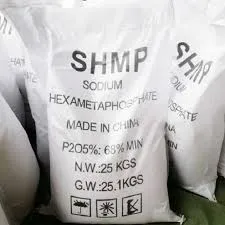Warning: Undefined array key "title" in /home/www/wwwroot/HTML/www.exportstart.com/wp-content/themes/1198/header.php on line 6
Warning: Undefined array key "file" in /home/www/wwwroot/HTML/www.exportstart.com/wp-content/themes/1198/header.php on line 7
Warning: Undefined array key "title" in /home/www/wwwroot/HTML/www.exportstart.com/wp-content/themes/1198/header.php on line 7
Warning: Undefined array key "title" in /home/www/wwwroot/HTML/www.exportstart.com/wp-content/themes/1198/header.php on line 7
- Afrikaans
- Albanian
- Amharic
- Arabic
- Armenian
- Azerbaijani
- Basque
- Belarusian
- Bengali
- Bosnian
- Bulgarian
- Catalan
- Cebuano
- China
- China (Taiwan)
- Corsican
- Croatian
- Czech
- Danish
- Dutch
- English
- Esperanto
- Estonian
- Finnish
- French
- Frisian
- Galician
- Georgian
- German
- Greek
- Gujarati
- Haitian Creole
- hausa
- hawaiian
- Hebrew
- Hindi
- Miao
- Hungarian
- Icelandic
- igbo
- Indonesian
- irish
- Italian
- Japanese
- Javanese
- Kannada
- kazakh
- Khmer
- Rwandese
- Korean
- Kurdish
- Kyrgyz
- Lao
- Latin
- Latvian
- Lithuanian
- Luxembourgish
- Macedonian
- Malgashi
- Malay
- Malayalam
- Maltese
- Maori
- Marathi
- Mongolian
- Myanmar
- Nepali
- Norwegian
- Norwegian
- Occitan
- Pashto
- Persian
- Polish
- Portuguese
- Punjabi
- Romanian
- Russian
- Samoan
- Scottish Gaelic
- Serbian
- Sesotho
- Shona
- Sindhi
- Sinhala
- Slovak
- Slovenian
- Somali
- Spanish
- Sundanese
- Swahili
- Swedish
- Tagalog
- Tajik
- Tamil
- Tatar
- Telugu
- Thai
- Turkish
- Turkmen
- Ukrainian
- Urdu
- Uighur
- Uzbek
- Vietnamese
- Welsh
- Bantu
- Yiddish
- Yoruba
- Zulu
Tem . 05, 2024 12:00 Back to list
What is Sodium Hexametaphosphate (E452i) in Food: Uses, Safety, Side effects
What is Sodium Hexametaphosphate (E452i) in Food: Uses, Safety, Side effects

Sodium hexametaphosphate, also known as its abbreviation SHMP, a polyphosphate commonly used in dairy products, sausage, seafood, meat processing, toothpaste, and also in water treatment. The European food additive number for it is E452i. Generally, its purpose in food is as a texturizer, sequestrant, thickener, and emulsifier.
What is Sodium Hexametaphosphate?
SHMP is a hexamer of sodium phosphate (NaPO3)6. It is a water-soluble polyphosphate that consists of chains of six repeating phosphate units.
What is it Made of?
Sodium hexametaphosphate is a mixture of polymeric metaphosphates, of which the hexamer is one. It is more correctly called sodium polymetaphosphate.
How is it Made?
SHMP is an inorganic polyphosphate that can be produced by chemical synthesis. Here introducing three manufacturing process according to various raw materials:
1. Sodium chloride and phosphoric acid
Sodium chloride and phosphoric acid as raw materials mixed evenly and subjected to melt polymerization. (1)
2. Caustic soda and phosphoric acid
Caustic soda liquid reacts with phosphoric acid, and then add sodium nitrate, dewatering and agglomerating process are conducted in an agglomeration gasifier. (2)
3. Monosodium orthophosphate
By heating monosodium orthophosphate to generate sodium acid pyrophosphate and then still heating. The following is the reaction equation (3):
- 2 NaH2PO4 → Na2H2P2O7 + H2O
- 3 Na2H2P2O7 → (NaPO3)6 + 3 H2O
Specification
Other Names
Calgon S, Glassy sodium, Graham’s salt, Hexasodium metaphosphate, Sodium tetrapolyphosphate, Sodium polyphosphates, glassy, Sodium polymetaphosphate, Sodium metaphosphate
CAS Number
10124-56-8
Chemical formula
Sodium metaphosphate is to describe polyphosphate with four or more phosphate units. Here SHMP has six phosphate units with the chemical formula (NaPO3)6.
Molecular weight
611.77
Structure

Properties
Appearance
It is a colourless or white, transparent platelets, granular, or powder.
Stability
A glassy phosphate with strong absorption ability and easy to hydrolyze to orthophosphate in warm water, acidic or alkaline solution.
PH
5.8-6.5
PH is related to P2O5 content, with lower P2O5 content corresponding to higher pH.
Solubility
Freely soluble in water, insoluble in organic solvents
What are the Uses?
SHMP can be used in food and beverage, personal care products, water treatment, and other industrial uses. Available in granular, glassy or powdered forms in the market. It exists food grade and technical grade in the market.
Food
Generally, it is a multi-functional ingredient that can work as a texturizer, PH regulator, metal ions chelating agent, binder, bulking agent and etc.
Food grade SHMP can be used as a cross-linking agent to react with starch to produce modified food starch by increasing starch molecular weight and stabilize the starch structure.
It is also commonly used with other sodium phosphates in the processing of fish, shellfish and other aquatic products as a water-retaining agent and quality or taste improver. Plus, we can also find it as an emulsifying salt in process cheese.
Let’s see its two common food applications.
Beverage
SHMP is used in a variety of beverage products. It extends shelf life, enhances flavor, and also improves clarity and prevents turbidity, such as in fruit juices and carbonated beverages. It can also stabilize the protein and enhance flavor in a protein drink.
Canned food
SHMP stabilizes natural pigments in canned beans, fruits and vegetables, and therefore protect its color. Also, it can emulsify fat in canned meat, resulting in maintaining uniform texture.
Food grade SHMP can also be used with other sodium phosphates to retain moisture, enhance flavor, and increase shelf life in the processing of meats, cheese, dairy products, seafood, and poultry.
Cosmetics
Per the “European Commission database for information on cosmetic substances and ingredients”, SHMP functions as anticorrosive, chelating and masking agents in cosmetic and personal care products. (4)
We can find the following personal care products with SHMP and its functions:
- Bath salts: soften the water and adjust pH.
- Toothpastes and Mouthwashes: remove calcium from stains on teeth.
Water treatment
The technical grade of SHMP is mainly used in water treatment as a sequestrant. It can reduce formation, corrosion, lead/copper leaching, and biofilm formation in pipes and other equipment. (5) And it can chelate certain metal oxides, such as Ca, and Mg.
Others
It is also used in other industrial applications, including clay processing (as a deflocculant), drilling fluids, and cleaning products.
Sodium Hexametaphosphate
Is Sodium Hexametaphosphate Safe to Eat?
Yes, its safety when used as a food additive has been approved by the U.S. Food and Drug Administration (FDA), European Food Safety Authority (EFSA), Joint FAO/WHO Expert Committee on Food Additives (JECFA), as well as other authorities.
FDA
SHMP is permitted to use as a flavoring agent or adjuvant in fruit jellies, cheese, frozen desserts and food dressing (6) (7). It is generally recognized as safe (GRAS) when used as a sequestrant in accordance with good manufacturing practice. (8)
EFSA
SHMP (E 452i) is a subclass of polyphosphates (E452) and classified in “additives other than colours and sweeteners”. It is approved as a food additive in the European Union (EU) in accordance with Annex II of Regulation (EC) No 1333/2008 on food additives and specific purity criteria have been defined in the Commission Regulation (EU) No 231/2012. (9)
Safety re-evaluation in 2019
EFSA derived a group acceptable daily intake (ADI) for phosphates expressed as phosphorus of 40 mg/kg body weight (bw) per day and concluded that this ADI is protective for the human population. (10)
Uses
It is permitted to use in almost all categories of foods with the maximum level 10,000 mg/l or mg/kg and the following foods may contain with it (11):
- Dairy products and analogues
- Fats and oils and fat and oil emulsions
- Edible ices
- Fruit and vegetables
- Confectionery
- Cereals and cereal products
- Bakery wares
- Meat
- Fish and fisheries products
- Eggs and egg products
- Sugars, syrups, honey and table-top sweeteners
- Salts, spices, soups, sauces, salads and protein products
- Beverages
- Ready-to-eat savouries and snacks
- Desserts
- Food supplements excluding for infants and young children
Food Standards Australia New Zealand
It is an approved ingredient named “Sodium polyphosphates, glassy” in Australia and New Zealand with the code number 452. (12)
JECFA
Functional class: Food additives: emulsifier, sequestrant, texturizer, thickener. (13)
What are the Possible Side Effects?
It is common that sometimes consumers have questions if sodium hexametaphosphate is bad for our health and what are the dangers. We understand that consumers care about the synthesized ingredients in the foods we eat. Generally, it is considered safe and almost no reported health risks. Maybe some people are allergic or sensitive to it.
A report published in the International Journal Of Toxicology in 2001, finding that SHMP caused several side effects in chronic studies in animals, as follows (14):
- growth inhibition
- kidney weights increasing
- bone decalcification
- parathyroid hypertrophy and hyperplasia
- inorganic phosphaturia
- hepatic focal necrosis, and muscle fiber size alterations
Is it Toxic?
EFSA claimed phosphates (including SHMP) to be of low acute oral toxicity and there is no concern with respect to genotoxicity and carcinogenicity. No effects were reported in developmental toxicity studies.
Is it Safe for Pregnant?
It is generally safe, better consult with your doctor.
Frequently asked questions
Is SHMP Natural?
No, it is not natural as it is made from chemical synthesis.
Is SHMP Vegan?
Yes, as mentioned above, it is vegan as the raw material used and manufacturing process without the use of animal matter or products derived from animal origin. As a food ingredient, it is considered vegan and vegetarians can eat it.
Is SHMP Halal?
Yes, it is recognised as halal as it is permitted under the Islamic Law and fulfill the conditions of Halal. And we can find some manufacturers certificated with MUI halal.
Is SHMP Kosher?
Yes, it is kosher pareve. It has met all the “kashruth” requirements and can be certified as kosher or maybe kosher passover.
Is SHMP Gluten free?
Yes, it is gluten free as it complies with the FDA’s definition of gluten free, that it does not contain wheat, rye, barley, or crossbreeds of these grains.
Conclusion
Now you may have a knowledge of the sodium polyphosphate – Sodium hexametaphosphate (E452i), from the following aspects:
- Three manufacturing processes
- Uses in food, toothpaste, water treatment and others.
- Safety
- Side effects
- FAQs: is it natural, vegan, gluten free and so on.
Latest news
-
Certifications for Vegetarian and Xanthan Gum Vegetarian
NewsJun.17,2025
-
Sustainability Trends Reshaping the SLES N70 Market
NewsJun.17,2025
-
Propylene Glycol Use in Vaccines: Balancing Function and Perception
NewsJun.17,2025
-
Petroleum Jelly in Skincare: Balancing Benefits and Backlash
NewsJun.17,2025
-
Energy Price Volatility and Ripple Effect on Caprolactam Markets
NewsJun.17,2025
-
Spectroscopic Techniques for Adipic Acid Molecular Weight
NewsJun.17,2025


